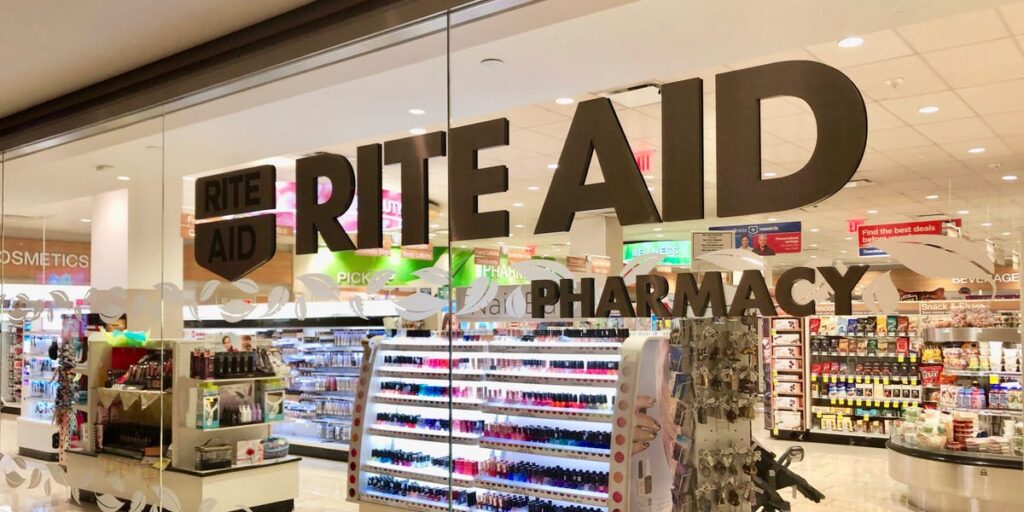It’s not an easy time to be in the drugstore business.
On Monday, Rite Aid found itself in bankruptcy for the second time in less than a year, having only exited protection back in September.
In a note to business partners, the pharmacy chain cited “rapidly evolving retail and healthcare landscapes” as challenges to its survival.
Indeed, the industry has changed a lot in the last few years, and experts tell BI the chain’s financial problems were worsened by the larger industry shifts.
“What’s happened to Rite Aid is quite an extreme, but it’s not like CVS and Walgreens are without similar problems,” GlobalData retail analyst Neil Saunders told Business Insider.
While the first foray through bankruptcy was largely due to an unsustainable debt load, Saunders said the company wasn’t able to find enough cash to survive in what has become a cutthroat industry.
In filings Tuesday, Rite Aid said that although it had reached agreements for some $166 million in credit, several lenders “delayed and in some cases walked away from earlier assurances,” leaving the company without funds to restock its shelves.
“Given the nature of products offered, including many products that consumers purchase on impulse, it is critical for the front end to be stocked with readily available inventory for customers to purchase when visiting the store,” the company said.
Sarah Foss, bankruptcy attorney and head of legal at Debtwire, told BI she was surprised that post-bankruptcy lenders wouldn’t do more to keep stores running.
“If you don’t have liquidity to operate, and your vendors aren’t going to give you any more stuff, then that’s what happens,” she said.
Years ago, one of Rite Aid’s larger rivals might have jumped at the chance to add the chance to add a competitor’s stores to its fleet, but those days are long gone.
“Both CVS and Walgreens are now in consolidation mode themselves,” Saunders said.
Powered by the unique combination of back-of-store prescription business and a front-of-store retail operation, the drugstore business made its mark by being both convenient and ubiquitous.
Unfortunately for the major brands, that approach led the industry to become “overbuilt,” in the words of Walgreens CEO Tim Wentworth, with too many locations to effectively support.
Meanwhile more patients turned to competitors like Walmart, Amazon, and other online providers to fill prescriptions, while understaffing and retail theft contributed to declining performance at the front.
Grappling with all of that is hard enough with a tidy balance sheet.
“It’s not a viable business model like it once was,” Foss said. “If your lenders don’t think it’s a viable business, then you really have problems.”
Read the full article here


